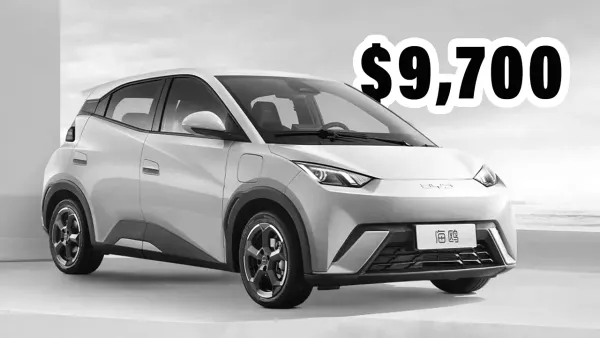EV brands used to compete on range, design, and performance. Now they’re fighting on entirely new terrain: politics, geopolitics, and public sentiment. In 2025, the battlefield isn’t just about building the best car; it’s about surviving the volatility that surrounds it.
Product-first thinking is obsolete
The old assumption was that a technically superior vehicle would outperform the competition. That logic no longer holds. Today’s risks don’t come from hardware, they come from headlines.
Tesla, for example, has seen its brand value swing wildly not because of a product failure but because of Elon Musk’s increasingly polarizing political presence. Once a progressive status symbol, Tesla now polls poorly with U.S. Democrats. Its favorability among that group dropped from 39% to 16% in under a year. In parts of the country, driving a Tesla has become a political statement and not the one it used to be.
This is not a Tesla problem. It’s a warning to every EV brand: strategy built around engineering alone will not withstand a shifting political and cultural climate.
Geopolitics has entered the showroom
Chinese EV giant BYD has scaled at remarkable speed globally, but it can’t enter the U.S. market. Why? Not because of its technology, but because of 100% import tariffs and national security fears over Chinese data access. Even BYD’s plans to build factories in Mexico have drawn concern from U.S. policymakers who see any proximity as a backdoor threat.
Meanwhile, the European Union has launched anti-subsidy probes into Chinese EV makers, signaling that politics, not product merit, may soon dictate access to key markets.
Tesla, for its part, is equally entangled. Its top-selling factory is in Shanghai, and roughly a third of its global sales come from China. That reliance exposes Tesla to pressure from both sides of a US-China rift. Strategy teams can no longer treat international operations as insulated from diplomatic tension. Where a factory sits may become as important as what it produces.
Domestic politics are just as dangerous
U.S. policy volatility is introducing a second layer of unpredictability. The same federal incentives that supercharged EV adoption under the Inflation Reduction Act could be reversed or weakened after a single election. Automakers that built their business cases on a steady climb in EV support may soon find themselves navigating regulatory whiplash.
Ford’s battery plant in Michigan (planned with Chinese partner CATL) was paused in late 2023 after union concerns and national security backlash. The project was technically sound but politically radioactive. The message is clear: EV strategy now requires navigating labor politics, trade policy, and public perception, not just manufacturing timelines.
The narrative now moves faster than your supply chain
Social media has compressed the timeline for brand crises. A CEO tweet, a viral protest, or a sudden boycott can reshape public perception in hours. Tesla knows this better than anyone. In 2023, protests erupted in China after sudden price drops angered recent buyers. Videos of the protests spread globally within days, denting Tesla’s reputation for customer care and consistency.
What used to take weeks of slow PR damage now happens in a weekend. And if your company isn’t tracking sentiment in real time or doesn’t have the governance to respond, there’s no buffer left.
The next risk isn’t technical. It’s strategic
This is the core shift strategy teams must internalize: the greatest threats to brand value now come from outside the product roadmap.
Your CEO’s public image is now part of your go-to-market strategy. Your manufacturing footprint is a geopolitical signal. Your PR team is a risk function. The brand has become the battlefield, and it moves faster than most companies are prepared to follow.
The teams that win will adapt in real time
Winning in 2025 and beyond will require:
- Active monitoring of political exposure, not just sales trends
- Flexibility to shift narrative strategy market by market
- Faster response structures for brand crises
- A risk lens that treats perception volatility as a core strategic input
This isn’t about being reactive. It’s about acknowledging that the old rules no longer apply. The next market disruption won’t come from a better battery, it will come from a sudden turn in sentiment, a flare-up in policy, or a misstep in positioning.
The question is whether your strategy team will see it coming or whether they’ll be caught off guard again, not by the cars but by the context.







